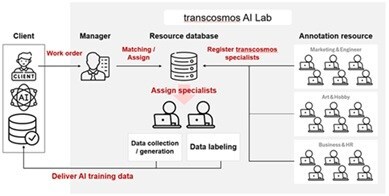–Store designers from HFA Architecture + Engineering offer tips on how grocers can stay true to their original vision even as they tap new audiences.
BENTONVILLE, Ark., Sept. 18, 2025 /PRNewswire/ — Local grocers need to stay true to their roots as they make the jump to regional or national footprints, advised veteran store designers from HFA Architecture + Engineering.
Strategic approaches to design can help these operators avoid developing a one-size-fits-all store prototype that fails to convey who they really are, observe Steven Le and James Owens (both AIA, NCARB) in a September 5 column for Progressive Grocer. “When local grocers start thinking about scaling up, they can go through a bit of an identity crisis,” they write.
Le is senior grocery + retail lead at HFA; Owens is a VP at the fully integrated multidisciplinary firm. Their column for Progressive Grocer offers three tips for using design to connect with diverse communities and customers.
The first is to take a more nuanced view of localization. Rather than just focusing on store designs that emphasize local produce and community connections, grocers can rely on meeting the needs of different patron profiles—a practice that hospitality architects have honed for years in their work on luxury hotels and resorts.
The first step is to study “how their new customers differ from one another,” Le and Owens write. “This knowledge can then be used to shape the look, feel and function of the store.”
To illustrate, they use the hypothetical of a store that will be within walking distance of three bustling colleges. “The design firm has put together multiple patron profiles for that location and observed that time-pressed students who rarely cook will make up a big part of the customer base,” they write. “The grocer can now work with the architecture and engineering team to maximize the visibility, visual appeal and convenience of the grab-and-go experience located close to the front of the store.
They also emphasize the value of making it a multidisciplinary conversation: “By huddling early in the planning process, grocers and their architecture and engineering teams can brainstorm more ambitious offerings, a conversation that should include how mechanical, electrical, plumbing, fire protection, or refrigeration codes and components could come into play.”
For example, a grocer opening in a college town in southwest Texas, might create a fast-casual street taco bar with a locally inspired menu and graphics, as well as a fast and efficient queueing system. “Mechanical engineers have worked with the store designers to create a distinct experience, controlling the airflow in and around the taco bar so that the croissants at the bakery on the other side of the store never take on the aroma of honey-lime barbacoa,” write Le and Owens.
In much the same way, the development of patron profiles might have revealed the important role of customers with different priorities and needs—retired professors, say, or parents with young children. The A+E team “might suggest giving politically and environmentally conscious shoppers a bit more information,” the architects write. “Imagine a portrait of the third-generation farmer who grew those habanero and serrano peppers, or an illuminated display showing how the store minimizes its carbon footprint.”
Lastly, they encourage local grocers to incorporate distinctive parts of their identity into the store design itself. At the New England grocery chain Market Basket, for example, some employees wear nametags showing the number of years that they have devoted to the company—a seemingly small detail that conveys a sense of community connection. Likewise, Publix has built a strong reputation for customer service.
“If the human dimension is a big part of who you are, make sure your architecture and engineering team understands this from the outset, because store design can be used to accentuate this strength,” the architects note. “For example, the team could design the café so that seating is close to the service counter, making it easy for regulars to shoot the breeze with their favorite baristas.”
As local grocers form their growth strategy, they should “focus on understanding the logistical, experiential and brand elements that will need to stay consistent,” Le and Owens conclude. “As for everything else, let flexibility and localization be the name of the game.”
Read the full article at:
https://progressivegrocer.com/scale-and-stay-true-your-roots
Media Contacts: At Jaffe Communications, Elisa Krantz, (908) 789-0700, [email protected].
View original content to download multimedia:https://www.prnewswire.com/news-releases/local-grocers-can-avoid-having-an-identity-crisis-as-they-expand-302560441.html
SOURCE HFA Architecture + Engineering


